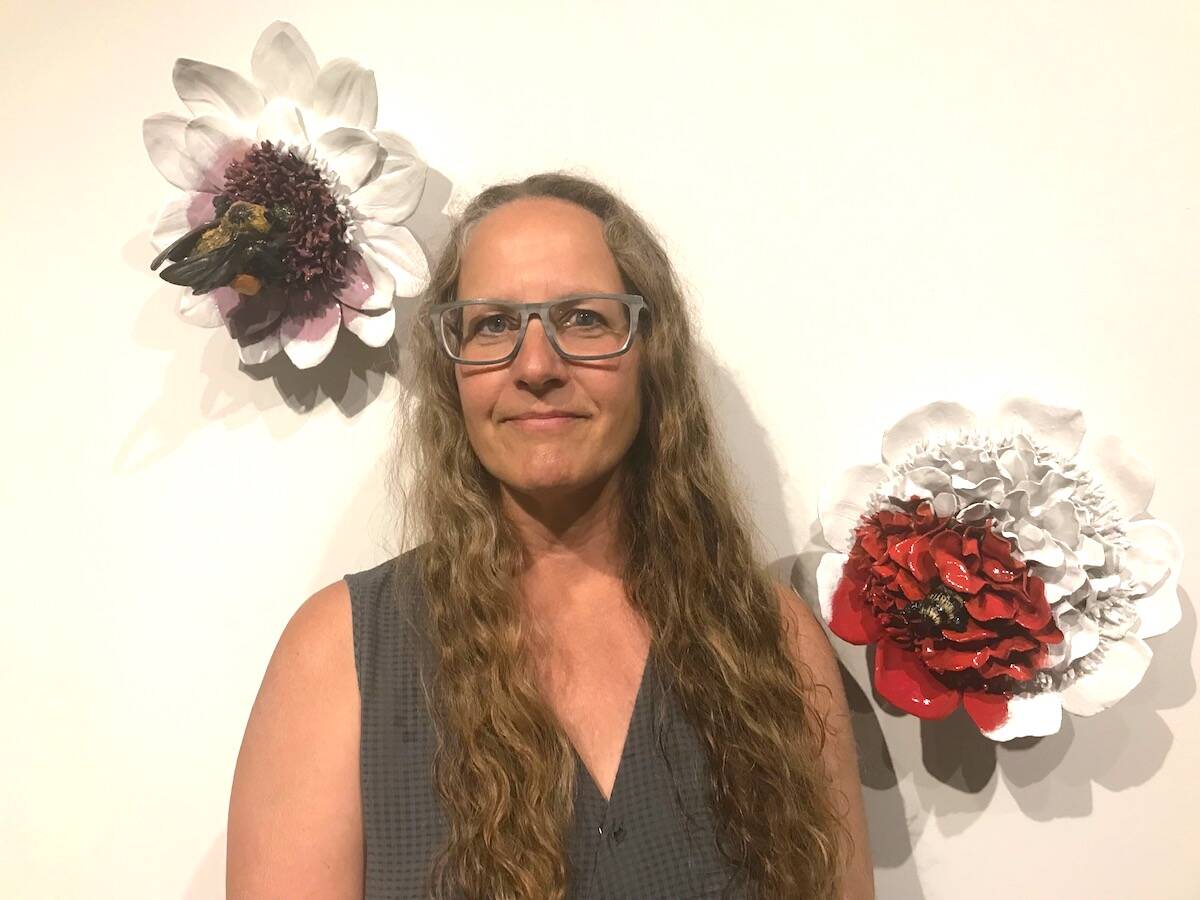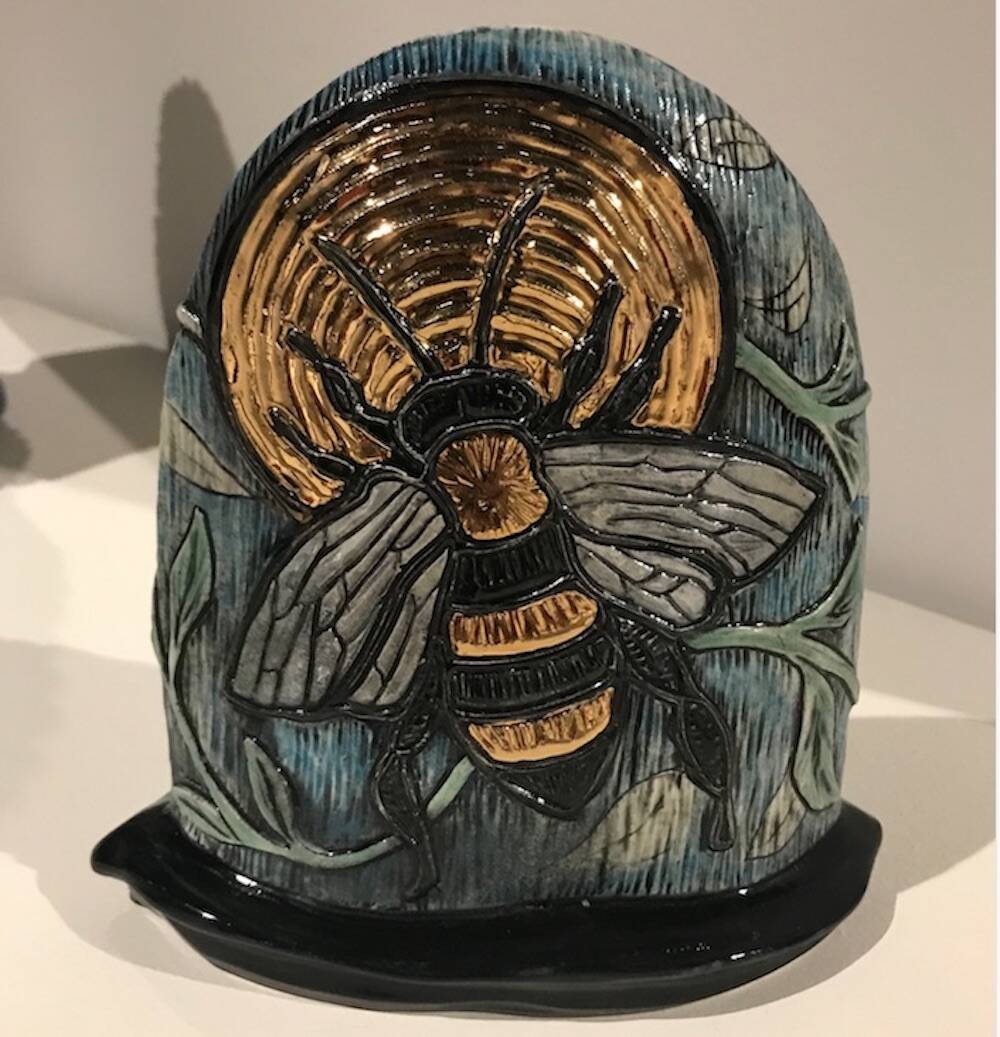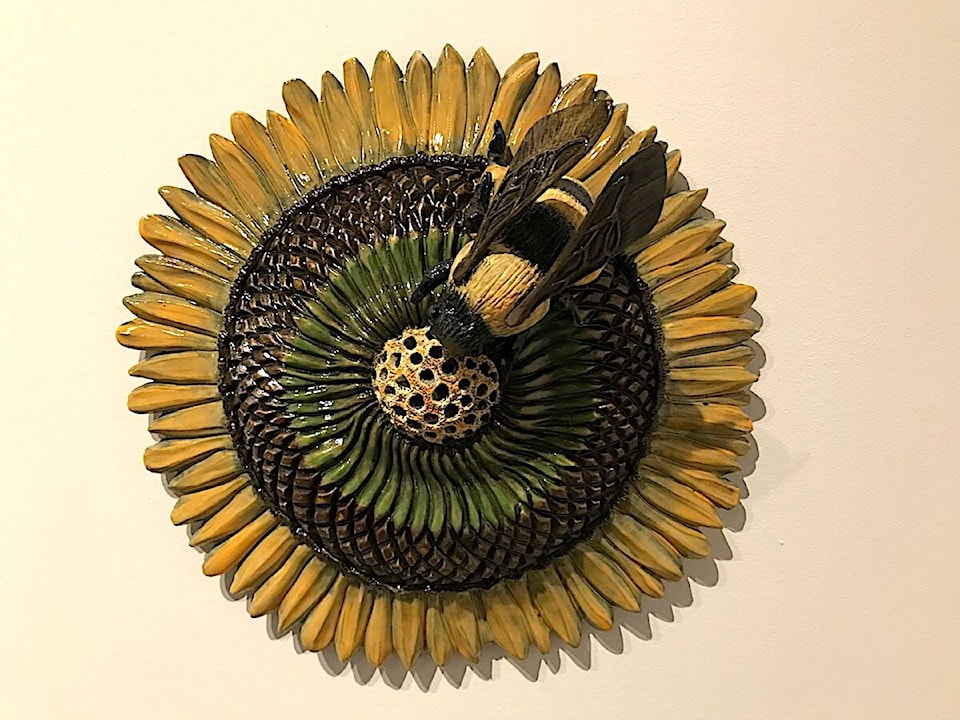Finding an unexpected gift of honey in her yard led Red Deer artist Dawn Detarando on an exploratory journey to raise awareness and appreciation of bees.
Detarando’s ceramics exhibit, In Adoration of Precarious Bees, at the Red Deer Museum and Art Gallery, offers viewers a glimpse into the perils bees experience every day — from parasites, chemicals, and even genetically altered flowers that produce less nectar.
“I didn’t even get to weather and climate change,” said Detarando.
But at some point during the creation process, the artist decided she also wanted to create some positive imagery that captures a more hopeful future for bees.
Detarando became intrigued by the little pollinators some years ago when she and her husband, Brian McArthur, found a busy beehive in the back of one of their duck nesting boxes on their property in South Red Deer.
After the hive was abandoned, they found about five pounds of honey inside.
The couple later twice tried catching swarms of wild bees. While their beekeeping efforts ultimately proved unsuccessful, Detarando became more aware of the variety of bees that buzz around her yard.
According to the Alberta Bee Council, there are more than 320 bee species in Alberta.
Detarando has noticed fluctuations in the number of bumble bees, leaf cutters, and feral honey bees that visited her garden.
Out-of-balance nature is causing some of the problem. Varroa mites, first found on imported European honey bees in Hong Kong and Singapore, have been weakening bees in North America since 1987. These oval red mites are depicted clinging to the back of a bee in Detarando’s dimensional wall plaque showing a honeycomb.
But most of the bees’ plight is man-made. Detarando fears continued use of lawn and garden chemicals will cause populations of the insects to plunge. Her art shows chemical spray bottles sculptures that are — ironically — beautifully embossed with the very wildlife they threaten.
“Many of us know chemicals are not good for bees and birds, and yet when we have an ant or wasp problem, we get our spray-cans out,” said Detarando.
Several of her embossed designs incorporate dandelion motifs. While many homeowners spray to kill these weeds, the artist learned that dandelions actually offer crucial nutrients for bees — particularly early in the spring when few other buds are around.
The insects’ life-giving force is depicted by Detarando by using coloured glazes only around where bees are shown pollinating on eye-catching large ceramic flowers that fade to white and hang on one wall of the exhibit.
Across the gallery, the artist revels in the rich colours of the plants that bees help to propagate in wall hangings that depict rows of flowers that are rife with insect life.
Detarando, who’s worked with McArthur in their company Voyager Art Inc. for a couple of decades, has a master’s degree in visual art from The Ohio State University. The couple have created public art around Red Deer, Alberta and Canada.
Detarando’s solo exhibit, In Adoration of Precarious Bees, has allowed her to spread her artistic wings and create a diverse body of work — ranging from painted plaques to three-dimensional sculptures — that showcases bees as “beautiful little beings.”
She hopes the display will make viewers reflect on the importance of these pollinators to our gardens and ecosystem. The show runs to Aug. 20.
lmichelin@reddeeradvocate.com
Like us on Facebook and follow us on Twitter


